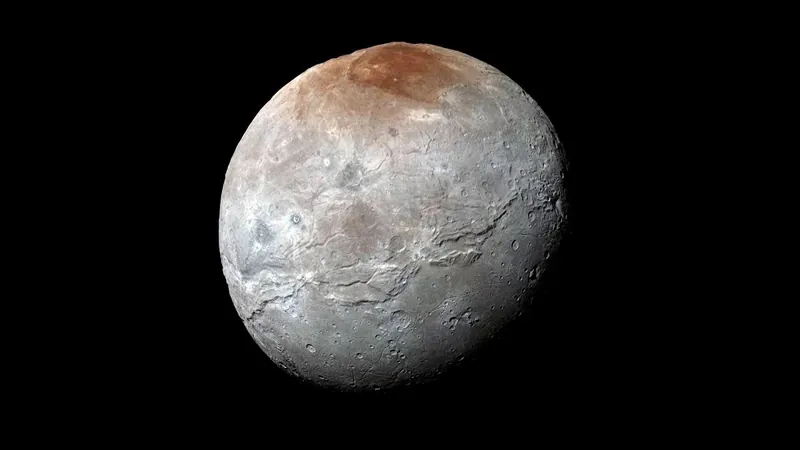
Groundbreaking Discovery: James Webb Telescope Unveils Carbon Compounds on Charon!
2024-10-04
Author: Yu
Groundbreaking Discovery: James Webb Telescope Unveils Carbon Compounds on Charon!
Scientists have made a groundbreaking breakthrough by detecting carbon dioxide and hydrogen peroxide on the surface of Charon, Pluto's largest moon, for the very first time. Utilizing the advanced capabilities of NASA's James Webb Space Telescope, researchers have gained fresh chemical insights about this distant celestial body.
Previously, during NASA's New Horizons mission in 2015, astronomers detected water ice, ammonia, and organic materials on Charon, providing initial glimpses into its complex chemistry. According to Carly Howett, an associate professor at the University of Oxford, “New Horizons provided incredible, detailed imagery of Charon and Pluto. However, its instruments had limitations that restricted our analysis.”
Thanks to the James Webb's expanded wavelength coverage, scientists have been able to uncover hidden chemicals that could not be detected before. “This broader spectrum allows us to identify the presence of carbon dioxide and hydrogen peroxide on Charon’s surface for the first time,” said Silvia Protopapa, a study co-author from Southwest Research Institute.
The near-infrared spectrograph aboard the James Webb Telescope operates at about 5.2 microns, which, despite having lower spatial resolution, allowed researchers to monitor the full coverage of Charon’s northern hemisphere during numerous observations in 2022 and 2023. “In that area, we’ve found an abundance of chemical signatures that we previously suspected but had no definitive proof of. This discovery is an exciting piece of the puzzle in understanding the dynamics of the Pluto system,” Howett explained.
The research team noted that while the discovery of carbon dioxide—often found throughout the solar system—was somewhat anticipated, the specific areas and structures where it's located provided new insights into Charon’s composition. Compelling theories suggest that carbon dioxide might emerge on its surface following impacts from space debris, while hydrogen peroxide likely forms through a process where radiation interacts with water molecules on Charon’s icy exterior.
As Howett elaborated, “Detecting hydrogen peroxide implies that this compound results from the radiolysis of water and reveals critical information about the radiation exposure Charon has experienced—an important factor in understanding its evolutionary history.”
Located in the frigid reaches of the Kuiper Belt—over 4.8 billion kilometers from the Sun—Pluto and its moons, including Charon, remain too cold to support life as we know it. However, this latest detection holds critical significance for studying Charon’s origins, potentially shedding light on the compositions of other remote moons and planets in our vast solar system.
Stay tuned as researchers further decode the mysteries of Charon and the intricate processes shaping the fate of celestial bodies in the edge of our solar system!




 Brasil (PT)
Brasil (PT)
 Canada (EN)
Canada (EN)
 Chile (ES)
Chile (ES)
 España (ES)
España (ES)
 France (FR)
France (FR)
 Hong Kong (EN)
Hong Kong (EN)
 Italia (IT)
Italia (IT)
 日本 (JA)
日本 (JA)
 Magyarország (HU)
Magyarország (HU)
 Norge (NO)
Norge (NO)
 Polska (PL)
Polska (PL)
 Schweiz (DE)
Schweiz (DE)
 Singapore (EN)
Singapore (EN)
 Sverige (SV)
Sverige (SV)
 Suomi (FI)
Suomi (FI)
 Türkiye (TR)
Türkiye (TR)